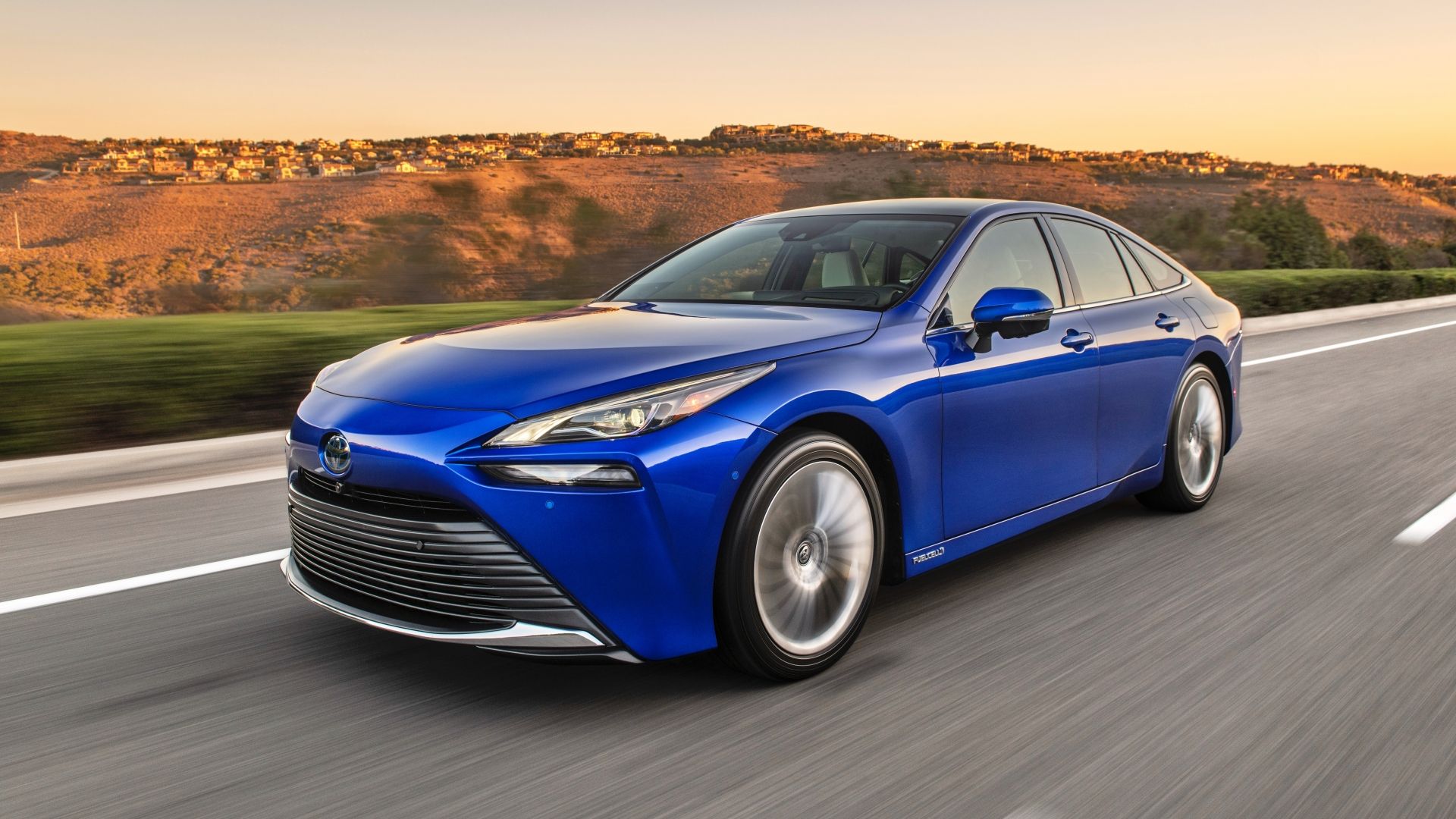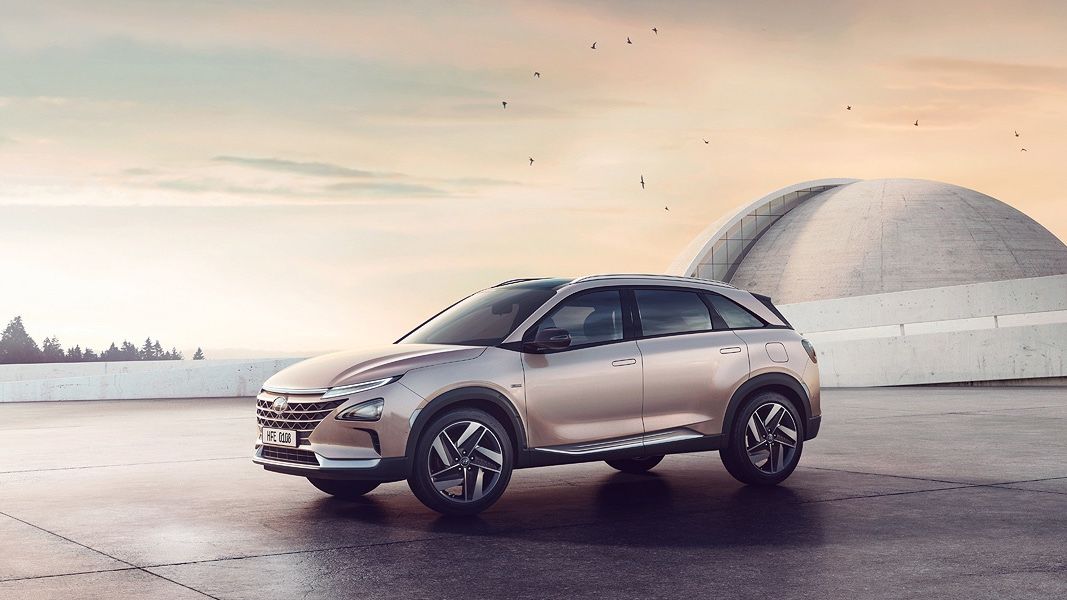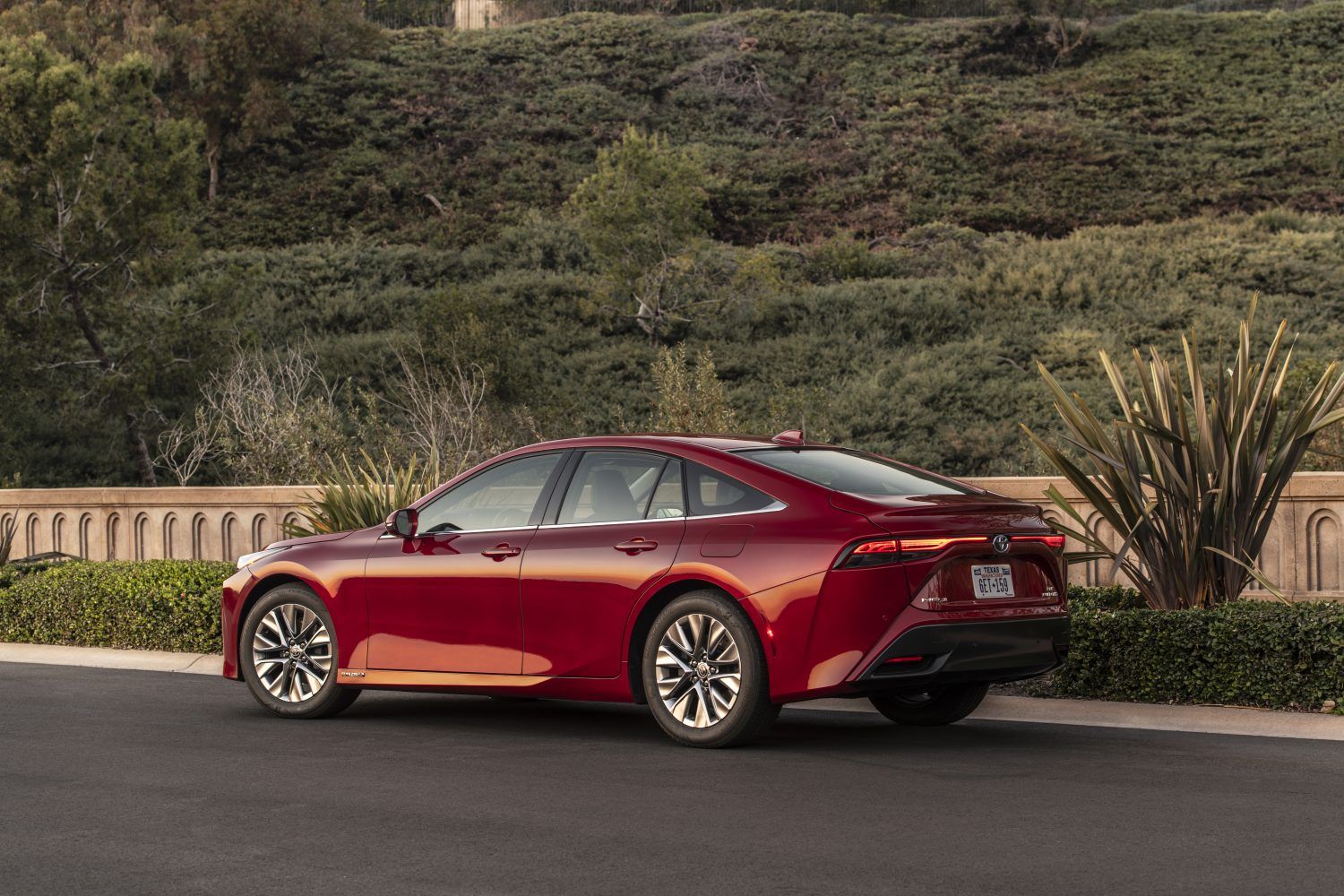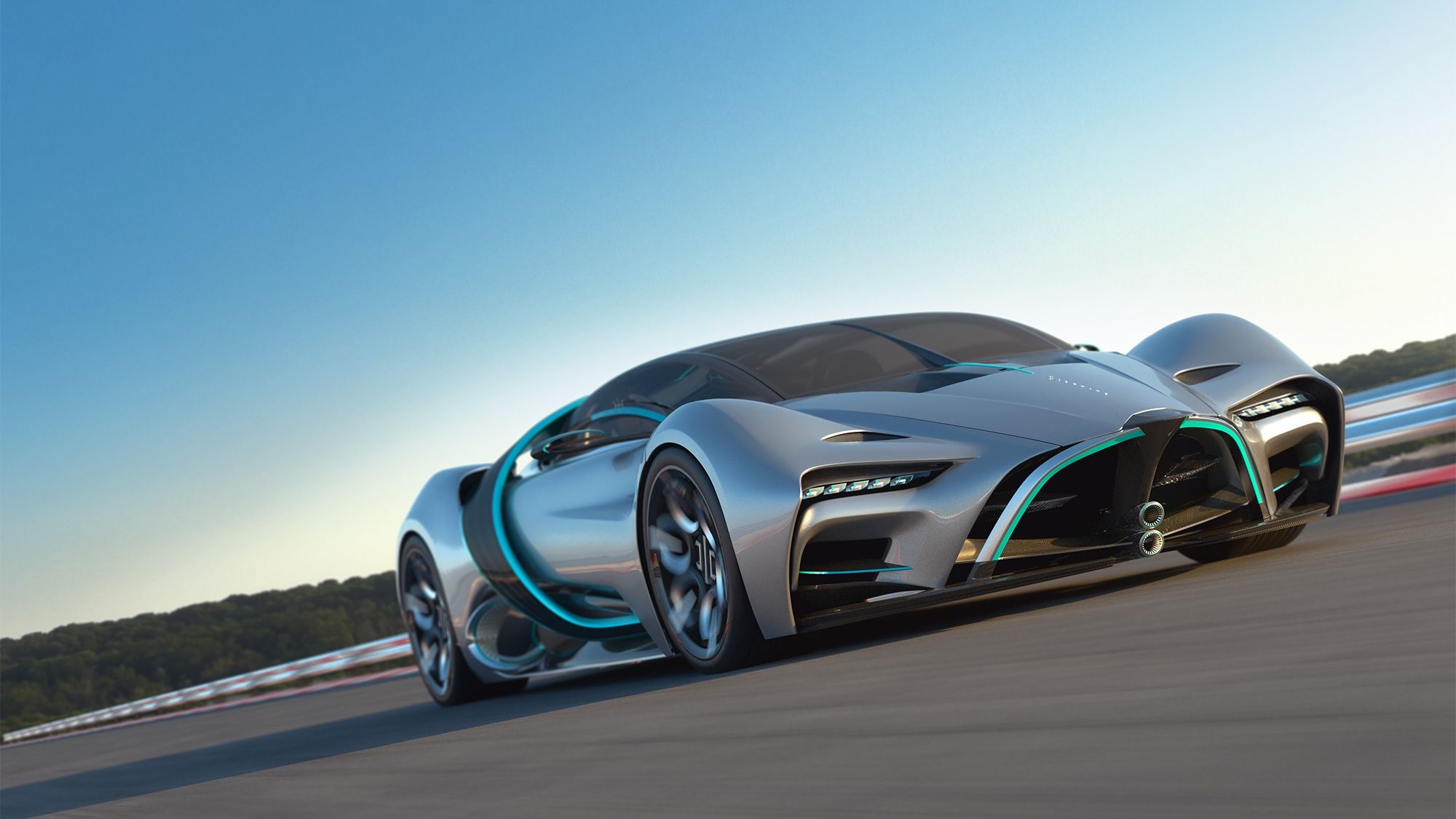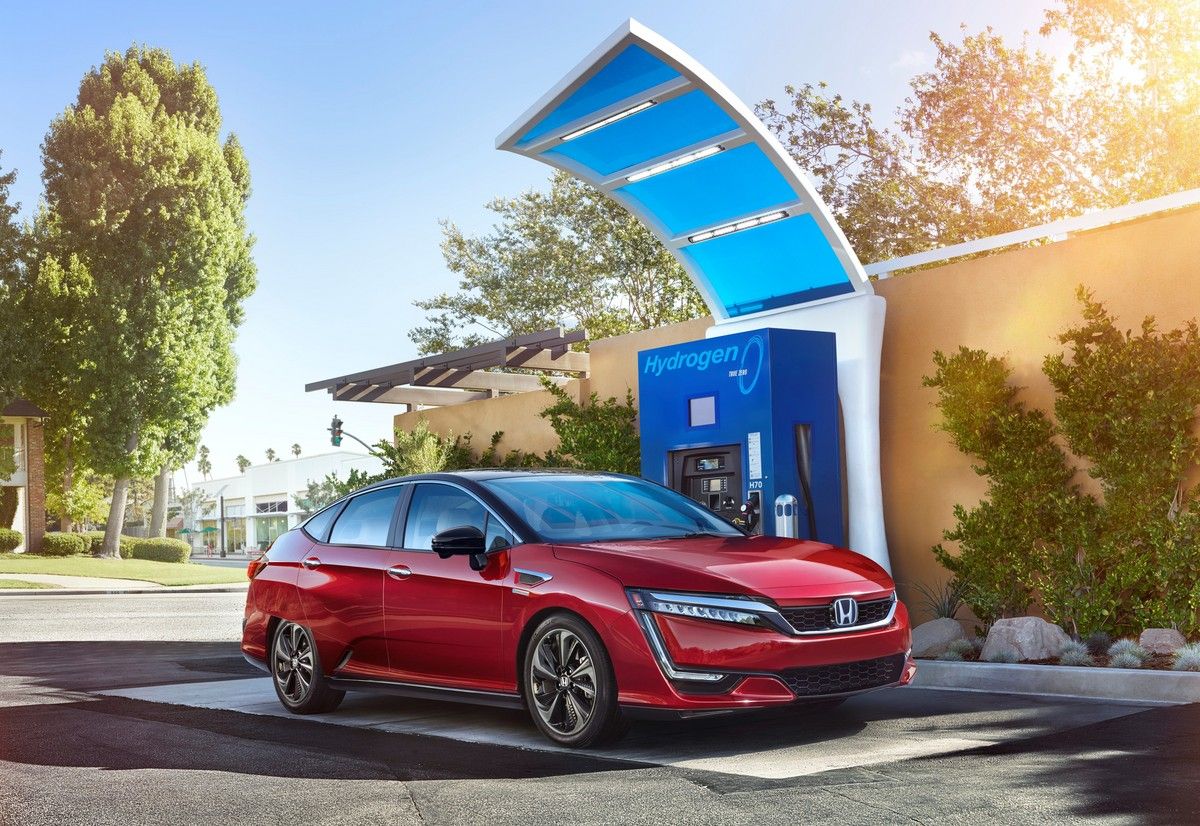After numerous false starts over the decades, the era of the electric car is finally here. Battery electric cars and hydrogen fuel cells are contending to be the way of the future, just as gasoline and diesel went head-to-head in the early days of automobiles. Battery-powered cars had the big advantage going mainstream first, largely thanks to Tesla, the Tesla Roadster, and the Tesla Model S, but these are still the early days of electric cars. Nothing has been established yet. There is no “traditional electric car” that has become the default. Currently, automakers are researching both batteries -- and now solid-state batteries -- and hydrogen systems. Hydrogen has many advantages that car manufacturers are only beginning to tap.
Hydrogen Cars Never Need To Charge
The most obvious advantage of hydrogen is that you never have to wait for the car to charge. You can refill the tank as quickly as getting gasoline. The ability to quickly refuel makes hydrogen cars better than electric ones for long-distance driving. It also makes them easier to own. One doesn’t need to schedule a good time to charge a hydrogen car daily. For comparison, an electric car currently requires at least 20 minutes to recharge at a fast-charging station. If one plugs the car into an ordinary household power outlet instead, the car may need several hours to recharge. While this may not be a problem for short-distance city driving, it becomes a problem for those who drive too many miles to simply plug in the car when they get home and leave it overnight.
Hydrogen Cars Have Longer Driving Ranges
Hydrogen cars have longer driving ranges than battery electric cars. Of course, as with anything related to cars, there is a lot of variation between different models regarding efficiency and fuel capacity. But generally speaking, hydrogen cars get around 300–400 miles on a tank of hydrogen. But among battery electric cars, mass-market favorites like the Nissan Leaf and Chevrolet Bolt respectively get 226 and 247 miles per charge. Only 14 electric cars can get more than 300 miles per charge. For people commuting in large metropolitan areas, this range difference can determine whether the car is capable of making a daily round trip without refueling (or recharging).
Hydrogen Cars Are More Efficient, Lighter, and Faster
The heaviest part of an electric car is the battery. On the other hand, a hydrogen fuel cell system (including the hydrogen tank) weigh far less than a battery does. That means that the electric motor in a hydrogen car doesn’t use nearly as much power to push the weight of the vehicle. If you put the same motor in a battery electric car and a hydrogen car, the hydrogen car will have better acceleration and higher top speeds because the motor has a lot less car to move. Reducing the vehicle’s weight by removing the battery frees automakers to do whatever they want with the extra power. Without the weight of a large battery, it’s easier to produce a car that feels (and is) light and fast. Because the hydrogen fuel cells are powering an electric motor, you get the same “instant torque” as a battery electric vehicle. But since the motor doesn’t have to move a heavy battery, all of that torque can go to pushing you into the back of your seat.
The improved power-to-weight ratio can also be advantageous in cars that aren’t designed for speed. In luxury cars, the motor can propel the weight of all that genuine wood and leather without having to use even more power to move a battery. Similarly, for family haulers and pickups, the car’s powertrain doesn’t have to drive those third-seat rows or loaded cargo beds in addition to bearing the weight of a battery large enough to power a truck. That frees the motor to haul more people, more cargo, or anything else.
Hydrogen Could Replace Gasoline In Internal Combustion Engines
Ford has patented an internal combustion engine that burns hydrogen instead of gasoline. Toyota has also developed a hydrogen engine for the Corolla Sport H2 concept, which has already been tested in racing. While the is still in the research phases, a hydrogen engine would take all of the developments in engine design throughout the history of the automobile, and use them on a clean-burning fuel. It would also be an easier sell for those who can't drive without the roar of an engine. As with fuel cell hydrogen cars, only water would come out of the tailpipe. This would simplify exhaust design. Catalytic converters and other emissions systems are unnecessary when the car only emits water vapor.
While a hydrogen combustion engine has many drawbacks for use in passenger cars (like the need for very large tanks that would take away interior space), Cummins is investigating hydrogen engines for long-haul vehicles, construction equipment, and other commercial use. The company proposes the trucking industry only needs a few hydrogen stations placed along shipping routes, which makes trucking a better way to start a nationwide adoption of hydrogen. Interestingly, hydrogen combustion supercars may be more feasible than, say, a hydrogen minivan. People driving supercars often don't care about limited passenger/cargo space (so the large fuel tank wouldn't be a problem), they certainly don't worry about fuel economy, and oftentimes they don't get too concerned about driving range either (how much driving range does one need to get a car on a trailer, drive it on a track or the salt flats for a bit, and then put it back on the trailer to go home?).
Simply put, you don’t need charging stations for hydrogen cars. There is no need to retrofit parking spaces for hydrogen cars because they never need to charge. While electric cars require cities to adapt by adding charging stations to parking lots, hydrogen cars need no such accommodation. A hydrogen car is a natural fit anywhere that already has roads. It's also worth noting that hydrogen cars (whether powered by electric fuel cells or by combustion engines) are still very much in their early stages of development. The first gasoline cars suffered from similar range limitations, which made them almost impractical for anyone but the most dedicated automobile owners.
How Do Hydrogen Cars Work?
Hydrogen cars don’t burn fuel like internal combustion engines do. Instead, the car’s power system pumps the hydrogen out of the tank and into an electrically-charged fuel cell that splits the hydrogen atoms’ electrons away from the protons. The car essentially makes electricity out of hydrogen. This in turn powers an electric motor that moves the car. This makes hydrogen cars clean and quiet. Only steam comes out of the tailpipe, and there is no engine noise.
The way a fuel cell works is surprisingly simple. A fuel cell contains an electrolytic membrane filled with free-floating protons, which is stacked between two oppositely-charged electrodes. The positively charged electrode is called a cathode, and the negatively charged electrode is called an anode. The car's fuel system pumps hydrogen onto the negatively-charged electrode. A catalyst splits the incoming hydrogen atoms into electrons and protons. Both the electrons and the neutrons want to pass through the electrolytic membrane to the cathode on the other side, but the membrane only allows the protons through. To reach the cathode, the electrons must take a longer path through the wires coming out of the fuel cell, which conveniently happens to route them through the car's motor, the stereo, and everything else. After powering the car, the electrons finally reunite with the protons at the cathode, which also has air flowing over it. The oxygen in the air reacts with the electrons and protons from the split-apart hydrogen atoms, forming water that goes out of the car's tailpipe.
Hydrogen Makes Better Electric Cars
This is an exciting time for anyone into cars. The electric motor is well on its way to superseding the internal combustion engine, even though today only a few electric cars are sprinkled among the gasoline- and diesel-fueled cars on the road. It’s a lot like the early days of automobiles, when it first became obvious that self-propelled cars were the way of the future even though they were still a rare sight on streets packed with horses. For now, battery-powered cars have gone mainstream while hydrogen cars remain confined to a few select cities with hydrogen fueling stations. However, in many ways, hydrogen makes better cars.

